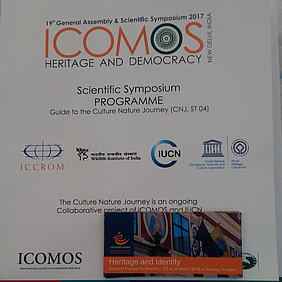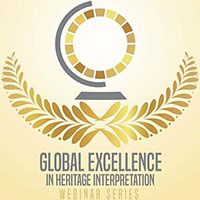Right after the 2018 Interpret Europe Conference and well into this year, why talk about a 2017 event held in Delhi, India? The answer is manyfold, as there are several links between the ICOMOS and IE conferences.
First of all, the 2008 ICOMOS Charter for the Interpretation and Presentation of Cultural Heritage Sites is a milestone document for the very fact that such an international scientific organisation as ICOMOS (International Council on Monument and Sites) is among the first few to recognise the importance and potential of heritage interpretation. Interpretation principles have been adopted in its policy, thus providing some guidelines for professionals managing monuments, buildings and sites. The sessions of the 2017 ICOMOS symposium sub-theme ‘Protecting and Interpreting Cultural Heritage in the Age of Digital Empowerment’ were indeed among the most popular ones.
As Interpret Europe has joined the European Year of Cultural Heritage, with some more accent on cultural heritage, the link with the main field of interest for ICOMOS is obvious. While the mission statement of ICOMOS stresses the physical aspects of heritage sites more, in fact, it was a unanimously shared view during the symposium that intangible cultural heritage is part and parcel of heritage management. Without doubt, it is yet another common understanding. But, more importantly, a special approach to heritage and its relationship with identity on various levels was the focus during the recent IE conference. And this approach was quite obvious throughout the ICOMOS symposium as the subtitle of the event was ‘Heritage and Democracy’ with subthemes like ‘Integrating Heritage and Sustainable Urban Development by Engaging Diverse Communities for Heritage Management’ and ‘The Role of Cultural Heritage in building Peace & Reconciliation’. In fact, the Delhi Declaration on Heritage and Democracy should be food for thought for all heritage managers and interpreters.
Also, following up on the pilot project of Connecting Practice, run jointly by ICOMOS and IUCN, the two organisations presented the subtheme of ‘The Culture-Nature Journey’. While heritage interpretation tends to be more holistic, not to separate nature and culture, strange as it might sound, the two key advisory bodies to UNESCO on World Heritage – ICOMOS and IUCN – have only recently initiated a more concerted practice on how to approach World Heritage Sites, particularly mixed sites and cultural landscapes, as these properties have their outstanding universal value rooted in both nature and culture. For this reason, the CNJ Yatra Statement is much-recommended reading, and also a path to follow in the future. In fact, this holistic approach was echoed during the IE conference, too, particularly during the study visits to the FertÅ-Hanság National Park and the ‘Nature and Us’ thematic strand. But this is also a message to most sites if they are to communicate the full sense and story of a place.
The synchronicity of the two conferences is fascinating, but without surprise, as both events addressed pressing and globally relevant issues. The ICOMOS GA 2017 website is still available and well worth browsing at: http://icomosga2017.org/.
Zsuzsa Tolnay holds MSc degrees in Biology, English (UNIDEB) and World Heritage Management (UCD) and a Postgraduate Diploma in Interpretation: Management and Practice (UHI). She has worked at national parks and World Heritage Sites in Hungary since 1998, currently at the Hortobágy National Park. She was on the conference organising team for KÃME for the recent IE conference in KÅszeg. She can be contacted at: tolnayzs@yahoo.com.
To cite this article:
Tolnay, Zsuzsa (2018) ‘Striking a common chord – Some thoughts on the ICOMOS General Assembly and Symposium’. In Interpret Europe Newsletter 1-2018, 32-33.
Available online:
www.interpret-europe.net/fileadmin/Documents/publications/Newsletters/ie-newsletter_2018-1_spring.pdf


